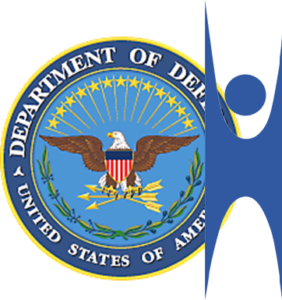Military Chaplains Embrace Diversity Including Humanism
Update 25 May: Further Analysis of the list
Update 23 Apr 2017: Minor corrections to Excel version of changes as well as a comparison to 2017 and 2013 Faith Group code listings to show impact of changes. Further commentary from MAAF and affected organizations, as well as analysis and recommendations forthcoming shortly as this story develops. — updated codes (Excel), new file with changes to various groups (PDF).
In what seems to be a new way forward for diversity in the military chaplaincy, the Office of the Assistant Secretary of Defense, on recommendation from the Armed Forces Chaplains Board, has recognized Humanism officially. There have been prior declarations that the government or the military has recognized Humanism in one way or another. But this is different. This new memo has authority and consent not seen before. This new directive has paved the way for good chaplains to do the right thing for Humanists and other nontheists in the military. Humanists can identify as who they are throughout the Department of Defense and be counted in top-level demographics. Having Humanist on the list of options will help chaplains to see and provide for the Humanist needs that have always been there in units throughout the military.
It is time to re-engage local chaplain offices and commanders to point to this memorandum. For those chaplains who have felt restricted in the past, this memo should open a door. The most common refrain from chaplains as they have turned away Humanists seeking help in the past has been, “You’re not on the list of recognized faith groups.” While no chaplain ever produced that list, this memorandum uses the term “recognized faith group” specifically and Humanism is on the list. Humanists should be knocking on the chaplain’s door again, and we hope they get Humanist materials and referrals to Humanist leaders and communities that best fit our needs. MAAF will be ready as always to help chaplains help troops.
The wording of the letter (text below) is extremely specific, starting with the recommendation of the Armed Forces Chaplains Board (AFCB). The AFCB is comprised of the Chiefs and Deputy Chiefs of Chaplains of each branch of service. This implies strongly that the Chiefs themselves are on board with inclusion of Humanism in chaplain programs. New public laws citing rights of conscience, not just god-based traditional faiths, show a commitment to abandon the outdated concept of a god-or-bust chaplaincy. And the codes themselves are renamed to Faith and Belief, not just Faith. Some may still find an objection to any term, but the new naming convention is clearly intended to be more inclusive. MAAF secured addition of Humanism to the Army list of religious preferences in 2014, but that had neither DoD scope nor chaplain support. While this memorandum is new and various agencies including MAAF are seeking clarifications, there are strong indications of real reform beyond simple administrative edits.
One important change is the elimination of “No Religious Preference.” This was often used as a catch-all, with Christians and atheists alike claiming its near 25% share of the total military population. MAAF has always derided the nonsensical “NORELPREF”option. Whatever their preference, it’s almost certain everyone has one. “No Preference” (not no rel pref) is still on the list. But also now on the list are “None Provided” and “No Religion”, as well as many others. Military culture will take years to change, but a main question of MAAF is what happens to the No Religious Pref? A strong recommendation is that those old “No Religious Preference” selections are moved to “Unknown” or “None Provided” and not to “No Preference”. In any case, there are many better options now, thanks to this more comprehensive new listing of beliefs.
Beyond Humanism, the new listing is a win for diversity in general. The entire list includes 221 different options, up from just over 100 among the various other old demographics lists. More categorization is forthcoming, but here are a few highlights: The addition of Humanism is well-warranted given long history of positive outreach, professional chaplain support, successful programs, and general interest. There is also reason to celebrate other additions. For example, Heathen, Asatru, and Troth designations are long-awaited and well-deserved among the Earth-Centered Community. Sacred Well Congregation now enjoys a spot on the list though another prominent organization, Circle Sanctuary, is notably absent. Endorsing agencies like National Association of Evangelicals, AGC, and CFGC are on the list, though similarly-organized Coalition of Spirit-Filled Churches seems absent. While these religious-but-not-denominational listings are questionable, it is better to have too many than not enough. “Protestant, No Denominational Preference” is deleted in favor of eight different Christian “Other” listings, as well as retention of the umbrella “Christian, No Denominational Preference” category. Jewish service members will have additional options. Where previously, only “Jewish” was available, now Conservative, Reform, and Orthodox are available, though not Reconstructionist or Humanistic Judaism.
The American Humanist Association has already praised the DoD move as they seek to secure similar rights for federal and state prisoners. “This is a step toward inclusiveness and respect for all Americans,” said Executive Director Roy Speckhardt. The Forum on the Military Chaplaincy, a prominent chaplain professional organization, is reviewing the move and plans to comment as well. The Veterans Administration has long-since added the Humanist “Happy Human” and many others to its list of approved headstone emblems and Humanist is an option for veterans seeking a listing on their official records. MAAF’s unique periodic reports on Department of Defense Religious Demographics, previously conducted in 2009, 2012, and 2014, will be far more interesting in their next iteration in summer 2019. With these chaplaincy and general population demographic updates, we may have a culture willing to see and support the diversity of belief that has always been there.
Memo dated Mar 27, 2017, Original PDF, text below, and table of codes transcribed to Excel (updated 23 Apr), Also added PDF version of changes to various groups.
The Armed Forces Chaplains Board (AFCB) reviewed the Department’s recognized faith groups and has recommended expanding this list of faith groups to better align with the language and intent of section 533, “Protection of rights of conscience of members of the Armed Forces and chaplains of such members,” of Public Law 112-239, “National Defense Authorization Act for Fiscal Year 2013.” The AFCB recommended adding new faith and belief groups to standardize and better identify religious preferences recognized by the Military Services. The AFCB asserts that these changes to identify the expanded faiths and beliefs will better assist the Department and the Military Services religious support planning by:
- Accurately tracking more faith and belief systems, providing more accurate demographic data for religious groups;
- Enabling better planning for religious support to the force; and
- Providing a better assessment of the capabilities and requirements of each Military Service’s Chaplain Corps.
The AFCB requested these additional faiths and beliefs be incorporated into the Faith Group codes and provided to the Military Services so the Active and Reserve Components may begin reporting the expanded collection of Faith Group Codes before these changes are promulgated in Department issuances to report personnel data. The new Faith Group coding is detailed in the attachment. The current title “Faith Group Code” will be changed to “Faith and Belief Code” in the Department’s personnel reporting requirements. These changes to Faith Group Code will be incorporated in Department of Defense Instruction 1335.05, and Enclosure 5, Department of Defense Manual (DoDM) 1336.05 for the Active Components and Volume 1, DoDM 7730.54, and Enclosure 5, Volume 2, DoDM 7730.54 for the Reserve Components with the next reissuance of these instructions and manuals.
The attached Faith Group Code table supports the existing code structure with additional codes for the new faiths and beliefs. These changes are provided so the Active and Reserve Components may begin reporting these new codes voluntarily subject to the current capabilities in your reporting of personnel data to the Defense Manpower Data Center.

